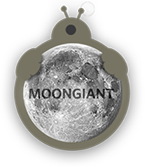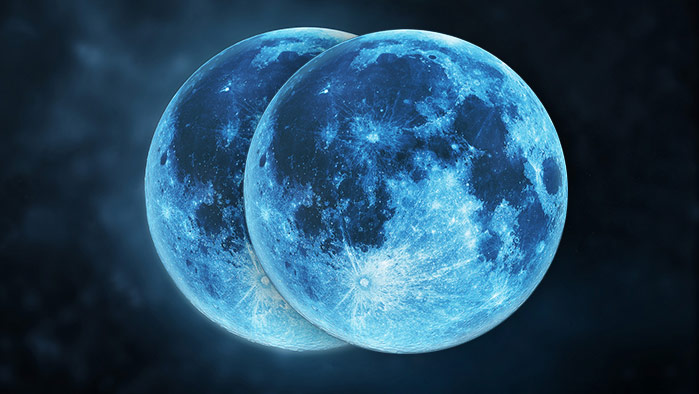

When is the next Blue Moon?
The next blue moon can be a matter of complexity due to the existence of two definitions. These definitions, stemming from historical and modern interpretations, offer two unique perspectives on what constitutes a blue moon. The modern or monthly definition, perhaps more popular in today's culture, identifies a blue moon as the occurrence of two full moons within a single calendar month, a rare celestial phenomenon. This can be seen on the blue moon calendar below. The traditional or seasonal definition designates the third full moon in a season containing four full moons as a blue moon, arising from the misalignment of lunar cycles with calendar months. This version of the blue moon occurs much less frequently making it a truely rare event. The next seasonal blue moon can be found on the historical blue moon calendar.
What is a Blue Moon?
The modern day definition of a Blue Moon is when there are 2 Full Moons in one month. A Full Moon occurs roughly every 29.5 days and on the rare occasion when the Full Moon falls at the very beginning of a month there is a good chance a Blue Moon will occur at the end of the month. According to this definition the next Blue Moon will occur on January 31, 2018.
Depending on the exact time of the Blue Moon it is possible that some places in the world don't technically have a Blue Moon. For example, the Blue Moon on August 31, 2012 occurred exactly at 13:58 UT. The Blue Moon will occur on August 31st in South America, North America, Europe, Africa, Asia, India, and Australia but New Zealand will just miss out. For New Zealand the Full Moon occurs just past mid-night on September 1st. For exact times of the Full and Blue Moons see the Full Moon Calendar.
Original Blue Moon Definition
The modern definition of a Blue Moon was derived from an earlier idea of what a Blue Moon was. This earlier definition says a Blue Moon is when there are 4 Full Moons in a season rather than the usual 3. The Blue moon is the 3rd Full Moon out of the 4. This definition gets a bit complicated and its origins are murky. One school of thought has to do with the naming of the Full Moons. Many cultures named the Full Moons each month to reflect the times for planting, harvesting or seasonal conditions. When an extra Full Moon was thrown in it was referred to as a Blue Moon to keep the Full Moon names constant throughout the year.
Another origin could be from the Christian ecclesiastical calendar. This one gets even more tricky but basically has to do with the idea that there are usually 12 Full Moons in a year. The Full Moons on this calendar were important markers for determining certain dates such as Easter. When a 13th Full moon was thrown into the year it made things messy so giving it a name allowed the calendar to stay on track.
The idea of a Blue Moon being the extra full Moon in a season (or when there were 13 in a year) was widely used in 19th and early 20th center Farmers Almanacs and the more modern version seems to have come from an article written in the 1930s that misinterpreted the Farmers Almanac definition. The article was titled "Once in a Blue Moon" and from that point on the term became part of the popular culture.
Is the moon ever the color blue?
This is a very rare event but it does happen. There are a few recorded events when forest fires or ash volcanic eruptions have given the Moon a bluish color. The Moon can also have a blueish color on very cold winter nights when ice crystals in the air form a ring around the Moon. Of course the idea of the Moon being blue is very subjective and left up to one's own interpretation.
Dark Moon
An interesting twist to the idea of a Blue Moon is the idea of Dark Moon. Sometimes the reference of a Dark Moon is given when there are 2 new Moons in a calendar month, the opposite of a Blue Moon. Other definitions say it is when there is no Full Moon in a calendar month. Neither of these definitions or the term Dark Moon is used very often. Neither has any scientific bases and is more a part of the popular culture.
To get a better idea of how Blue Moons and Dark moons all fit together, have a look at the Full Moon and New Moon calendar.